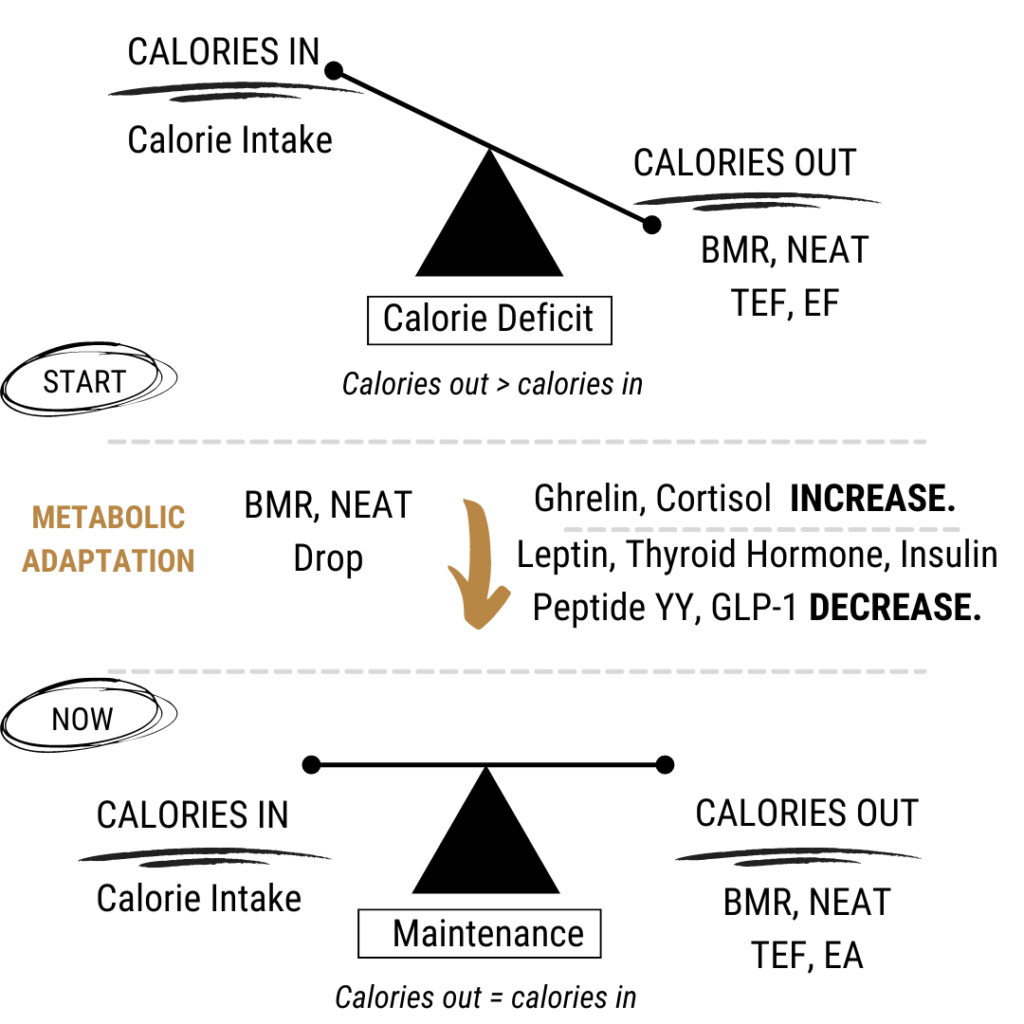Many people start a new eating plan, lose a little weight, then hit a frustrating plateau—or regain even more than they lost. The problem usually isn’t “lack of willpower.” It’s expecting rapid results from rigid fad diets that don’t fit personal preferences or daily routines. This guide explains why diets fail, how realistic timelines work, and simple ways to build a sustainable whole-food plan that delivers steady fat loss and better energy.
1. Red-Flag “Quick Fix” Diet Promises
Popular approaches such as keto, carnivore, vegan, Mediterranean and intermittent fasting can all work—if they match your taste buds and lifestyle. Trouble starts when an eating style:
- Promises extreme results (“Lose 20 lb in 30 days!”).
- Eliminates entire food groups you enjoy, making long-term adherence unlikely.
- Ignores the basic math of fat loss: roughly 3,500 calories ≈ 1 lb of body fat. A 500-calorie daily deficit still takes a full week to lose one pound of fat.
When progress doesn’t match hype, discouragement sets in and old habits return. Instead of chasing speed, aim for 0.5–1 lb of fat loss per week. That pace is easier on hormones, preserves lean muscle and—most importantly—feels doable.

2. Match the Plan to Your Preferences
Weight-loss research consistently shows that adherence outweighs macronutrient ratios. If you despise low-carb eating, forcing a strict ketogenic plan will collapse the moment cravings outweigh motivation. Likewise, a plant-only regimen won’t last if you miss steak by day three.
Ask yourself:
- Can I see myself enjoying these foods six months from now?
- Does the plan allow occasional flexibility for social events?
- Am I hitting a protein target (0.7–1 g per pound of goal body weight) to maintain muscle?
If the answer is “no,” adjust the template—or choose a different style altogether. A sustainable diet is one you like enough to keep.
3. Set Realistic Timelines and Track the Right Metrics
Daily weigh-ins can swing by several pounds due to water shifts, carbohydrate intake and sodium. Focus on weekly averages, body-fat percentage or waist-to-height ratio for truer progress markers.
Timeline guidelines:
- 0–4 weeks: Expect improved energy, better digestion and lighter morning bloating before major scale changes.
- 4–12 weeks: Steady fat loss becomes visible as habits solidify.
- 12+ weeks: Lifestyle foundations replace “diet mode,” helping weight stabilize long term.
4. Whole-Food Foundations That Work with Any Style
Regardless of labels (keto, vegan, Mediterranean), results hinge on nutrient density and calorie control. Build most meals from:
- Quality protein: eggs, poultry, fish, lean beef, Greek yogurt, tempeh.
- Colorful produce: at least two fist-size servings of vegetables or fruit per meal.
- Smart carbs: oats, quinoa, sweet potatoes, fruit—portioned to activity level.
- Healthy fats: avocado, extra-virgin olive oil, nuts, seeds.
A simple plate rule—half produce, one-quarter protein, one-quarter carbs, plus a thumb of healthy fat—keeps calories in check without meticulous weighing. For a deeper dive into balanced eating, see the CDC’s overview of Healthy Eating for a Healthy Weight.
5. Expect—and Bust—Weight-Loss Plateaus
Plateaus often reflect two realities:
- Adaptive metabolism: As body mass drops, maintenance calories drop too. A deficit shrinks unless adjusted.
- Hidden calorie creep: Sauces, snack bites and weekend drinks silently erase weekday discipline.
Reset strategies:
- Recalculate estimated maintenance calories every 10 lb lost; reduce intake or increase activity by ~150 cal if fat loss stalls for three weeks.
- Audit portion sizes for “extras” (dressings, cooking oils, lattes).
- Add one brisk 20-minute walk post-meals to boost daily energy expenditure.

GettFit – “Metabolic Adaptation: What Is It, Why It Happens, & How to Reduce The Effects”
6. Mindset: Chase How You Feel, Not Just the Scale
Whole-food transitions regularly deliver faster improvements in mood, energy and sleep than visible fat loss. Noticing those wins keeps motivation high while the scale catches up. Journaling daily energy, digestion and workout performance highlights progress you might overlook.
7. When Professional Guidance Helps
If confusion or accountability gaps keep recurring, a structured nutrition program can streamline everything—macro targets, meal ideas and progress check-ins. Quality programs emphasise gradual change, flexible meal templates and education so clients maintain results long after coaching ends.
Pro tip: Before signing up, confirm the plan includes individualised calorie and protein goals, not copy-paste menus.
Key Takeaways
- Create a modest, consistent calorie deficit—no starvation tactics.
- Choose an eating style you genuinely enjoy; sustainability beats novelty.
- Measure progress beyond the bathroom scale: energy, strength, waist size.
- Anticipate plateaus and adjust calories or activity, not motivation.
- Celebrate small wins each week; momentum fuels long-term change.
Disclaimer: This content is for informational purposes and does not replace personalised medical or dietary advice. Consult a qualified professional before starting any nutrition or fitness program.
Video Summary
To learn more about nutrition, fitness, and health from professionals and experts, visit our channel and subscribe: https://www.youtube.com/@Vitality-and-Wellness





